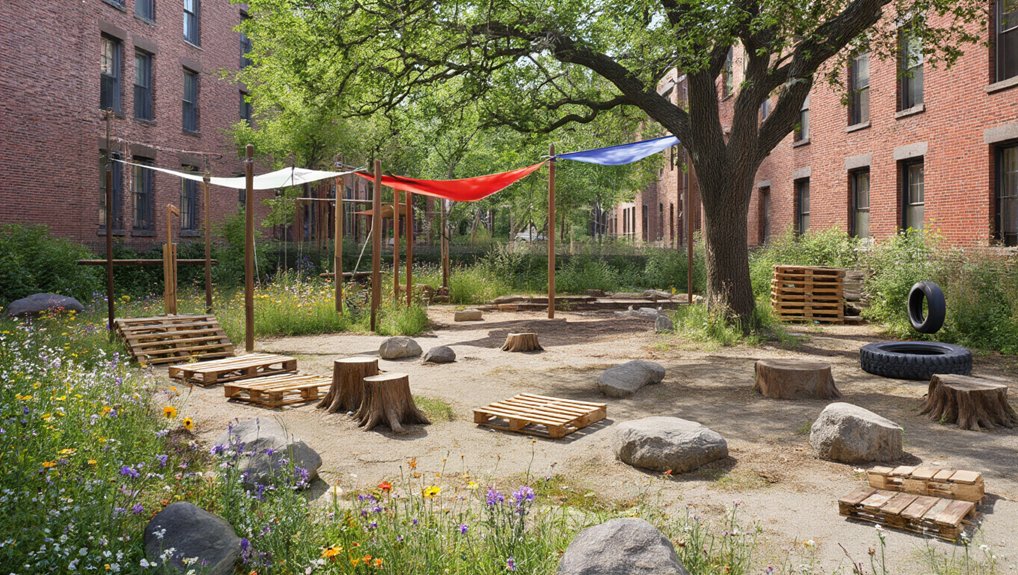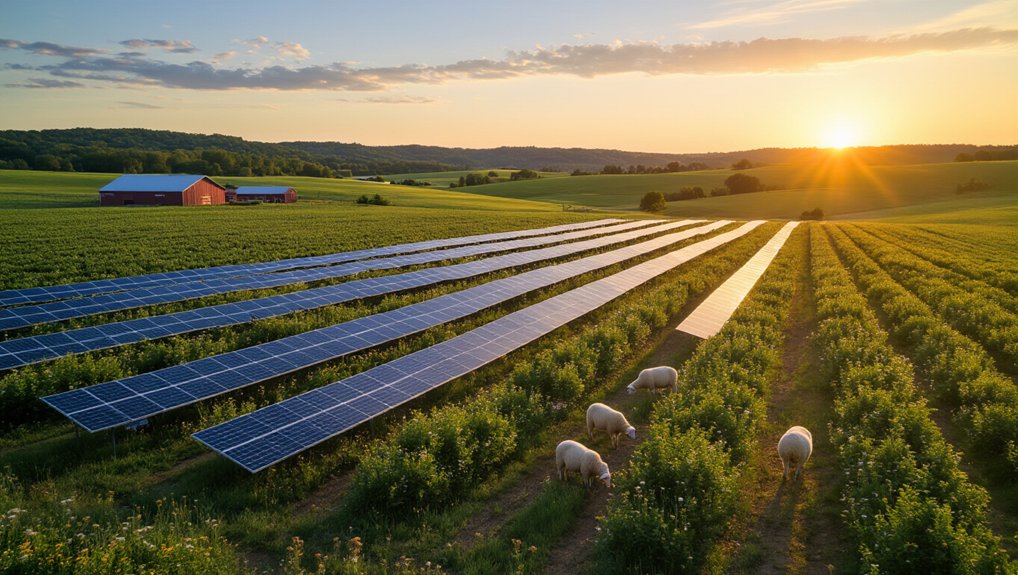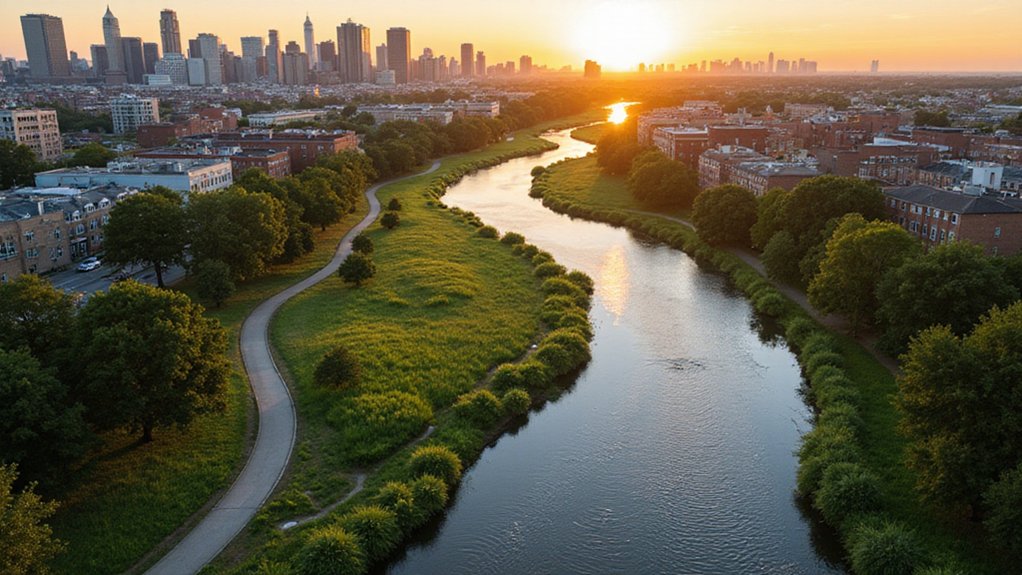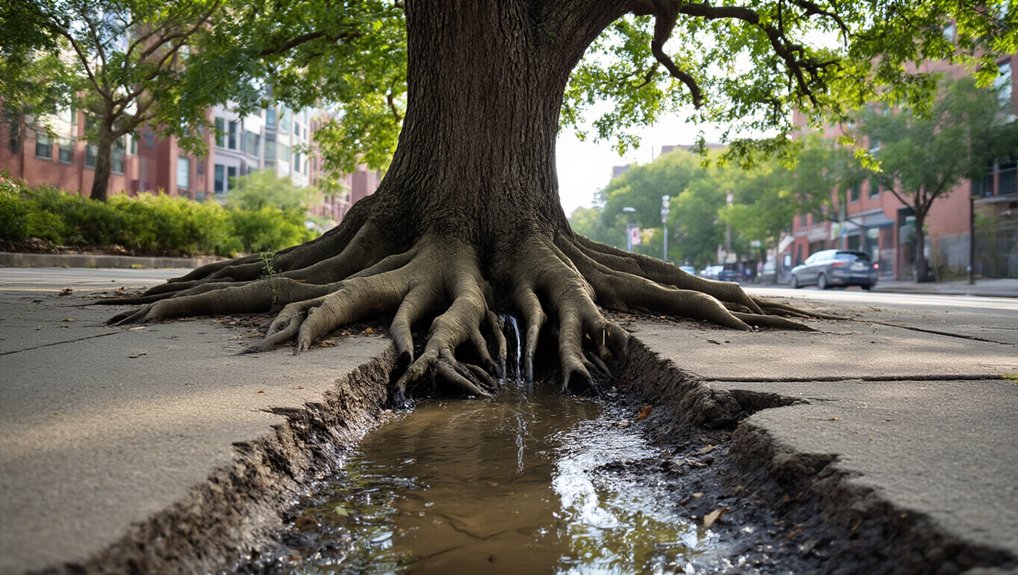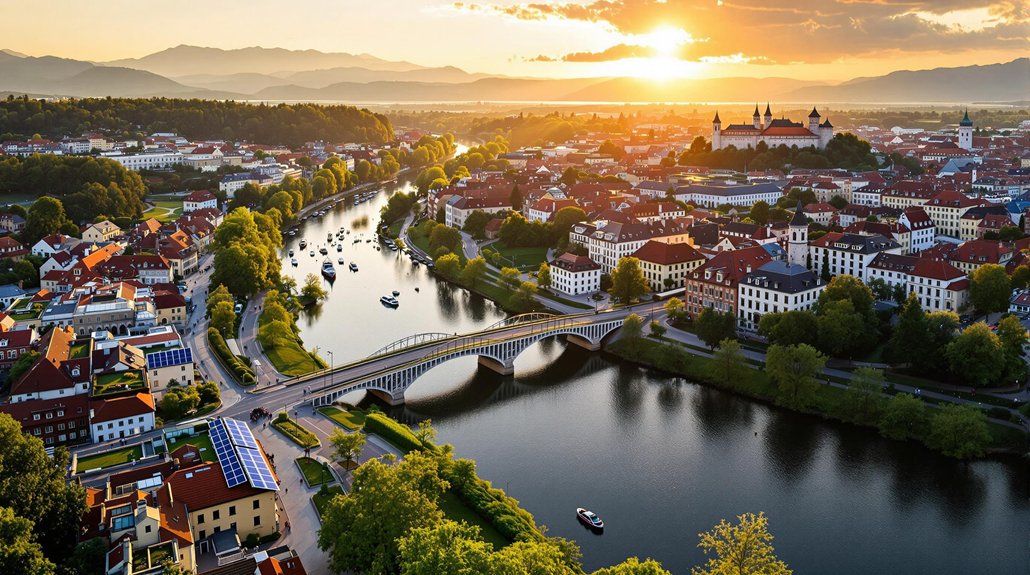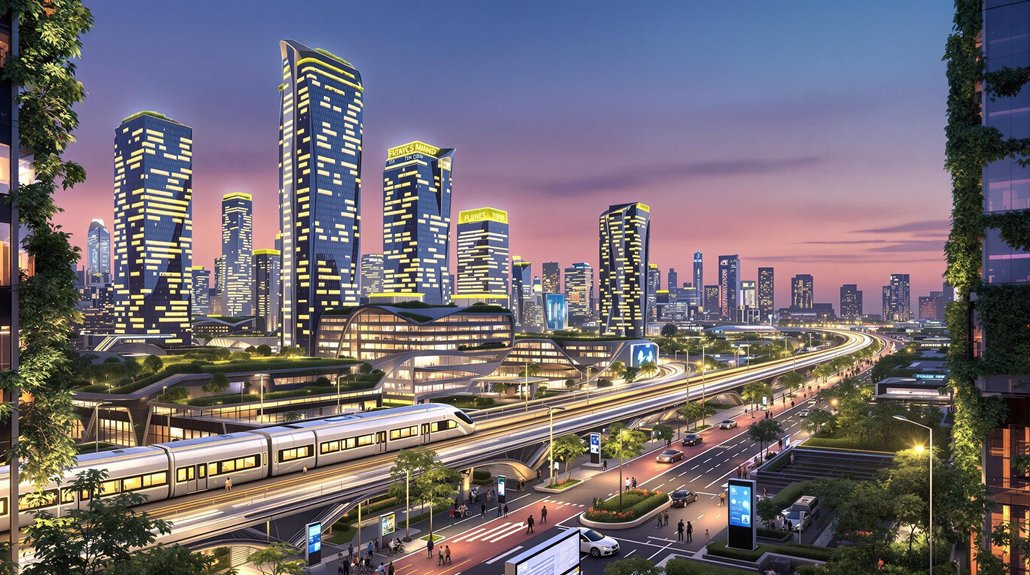While children climb all over traditional swing sets and slides in parks across the country, they’re secretly yearning for something else entirely. The evidence is clear: kids prefer vacant lots, alleyways, and undefined urban spaces over those predictable, manufactured playground experiences. Only 20-28% of children aged 6-17 meet their recommended daily physical activity—and maybe that’s because traditional playgrounds are just plain boring.
Let’s face it, swings and slides offer one-dimensional play. Up, down. Back, forth. Repeat until nausea sets in. Undefined spaces, however, spark imagination. They’re blank canvases. No rules. No limits. Just possibilities. These informal urban areas mirror natural environments and offer physical, cognitive, and emotional benefits that standard playgrounds simply can’t match.
Traditional playgrounds limit. Undefined spaces liberate. Where one confines imagination, the other sets it free.
Urban play spaces foster more than just movement. They’re social laboratories where kids learn empathy, build communities, and develop problem-solving skills. The lack of defined boundaries in these spaces encourages children to think creatively—something increasingly rare in our structured world. Kids create their own adventures instead of following predetermined patterns of play.
These undefined spaces also promote inclusivity. Without the rigid structure of traditional playgrounds, children from diverse backgrounds mingle and collaborate. Community gardens combined with play spaces further enhance this effect, creating intergenerational connections that strengthen neighborhood bonds. The integration of these spaces also saves space through smart land-use planning in urban environments.
It’s not rocket science. People connect when given the space to do so.
Environmental awareness naturally follows. When play incorporates natural elements, children develop respect for ecological systems. These natural play areas can incorporate urban green spaces that support local biodiversity and provide habitat for pollinators and wildlife. They learn sustainable habits through direct engagement with nature—something plastic slides simply don’t offer.
Accessibility matters, too. Flexible, undefined spaces can be created at various scales, from micro-parks to transformed lots. They adapt to community needs and evolve over time. No fancy equipment required—just space and imagination. This approach aligns with what play experts advocate for: community-responsive environments that reflect the changing lives of children and families.
The verdict? Traditional playgrounds are outdated. Children need undefined urban spaces that foster holistic development through open-ended, imaginative play. Maybe it’s time we listened to what kids actually want.
References
- https://www.morningagclips.com/how-urban-play-spaces-can-double-as-community-gardens-for-kids/
- https://www.pps.org/article/play-research
- https://www.arup.com/globalassets/downloads/insights/reclaiming-play-in-cities.pdf
- https://www.brookings.edu/articles/the-urban-play-framework-an-approach-for-understanding-the-play-experience-in-cities/
- https://www.outdoorplaycanada.ca/2022/10/14/play-friendly-cities-benefits-influencing-factors-and-actual-behavior-of-kids/
